- Clone
- 1D11 (See other available formats)
- Regulatory Status
- RUO
- Other Names
- NKG2D
- Isotype
- Mouse IgG1, κ
- Ave. Rating
- Submit a Review
- Product Citations
- publications
CD314 is a homodimeric C-type lectin-like protein also known as NKG2D. It is expressed on NK cells, CD8+ T cells, γ/δ T cells, and in vitro induced LAK cells. Several molecules have been identified as the ligands for NKG2D, including MHC class-I chain-related protein A (MICA), MICB, and UL16-binding proteins (ULBPs). NKG2D has no intrinsic signaling capacity, but attains this by non-covalent association with DAP10 or DAP12 adaptors. In addition to being a primary activation receptor on NK cells, NKG2D is also a costimulatory receptor for TCR-mediated T cell proliferation and cytokine production. The interaction of NKG2D with its ligands plays a role in the immune surveillance against pathogen and tumor cells, and in the pathogenesis of autoimmune diseases.
Product DetailsProduct Details
- Verified Reactivity
- Human
- Reported Reactivity
- African Green, Baboon, Cynomolgus, Rhesus
- Antibody Type
- Monoclonal
- Host Species
- Mouse
- Formulation
- Phosphate-buffered solution, pH 7.2, containing 0.09% sodium azide
- Preparation
- The antibody was purified by affinity chromatography and conjugated with Spark Red™ 718 under optimal conditions.
- Concentration
- 0.2 mg/mL
- Storage & Handling
- The antibody solution should be stored undiluted between 2°C and 8°C, and protected from prolonged exposure to light. Do not freeze.
- Application
-
FC
- Recommended Usage
-
Flexi-Fluors™ are provided at a standard 0.2 mg/mL concentration. We recommend titrating this reagent to determine the optimal concentration for each application. For many flow cytometry applications, conjugated antibodies perform well at concentrations ranging from 0.03 to 1.0 µg per million cells in 100 µL. We recommend testing a range of concentrations starting from 10 µg/mL.
For example, make five 1:1 serial dilutions of the 0.2 mg/mL antibody. Add 5 µL of each dilution (including the undiluted antibody) to 100 µL of cells (at 107 cells/mL) to test six concentrations -- 1.0, 0.5, 0.25, 0.125, 0.06, and 0.03 µg per million cells in 100 µL volume. Compare staining patterns or create a titration curve using the MFI or staining index to determine the optimal concentration.
* Spark Red™ 718 has a maximum excitation of 697 nm and a maximum emission of 711 nm. - Excitation Laser
-
Red Laser (633 nm)
- Application Notes
-
The 1D11 antibody blocks MICA binding to T cells, induces redirected lysis, and costimulates T cells activation and proliferation. Additional reported (for the relevant formats) applications include: immunoprecipitation1,2, blocking of ligand binding, induction of redirected cell lysis, and costimulation of T cells proliferation2-7. For highly sensitive assays, we recommend Ultra-LEAF™ purified antibody (Cat. No. 320814) with endotoxin < 0.01 EU/µg, Azide-Free, 0.2 µm filtered.
- Additional Product Notes
-
For more information about Flexi-Fluors™, visit our Flexi-Fluor™ page and review FAQs associated with this product line.
-
Application References
(PubMed link indicates BioLegend citation) -
- Wu J, et al. 1999. Science 285:730.
- Wu J, et al. 2000. J. Exp. Med. 192:1059.
- Groh V, et al. 2001. Nature Immunol. 2:255.
- Wu J, et al. 2002. J. Immunol. 169:1236.
- Roberts A, et al. 2001. J. Immunol. 167:5527.
- Groh V, et al. 2003. Proc. Natl. Acad. Sci. USA 100:9452.
- Kraetzel K et al. 2008. Eur. Respir. J. 32:563. PubMed
- Correia DV, et al. 2011. Blood 118:992. (FC) PubMed
- Watanbe M, et al. 2014. Int Immunol. PubMed
- RRID
-
AB_3662440 (BioLegend Cat. No. 285204)
Antigen Details
- Structure
- C-type lectin
- Distribution
-
NK cells, γ/δ T cells, CD8+ T cells
- Function
- Cytolytic killing of target cells expressing NKG2D ligands, costimulation of NK cells and T cells
- Ligand/Receptor
- MICA, MICB, UL16-binding proteins (ULBPs)
- Cell Type
- NK cells, T cells
- Biology Area
- Costimulatory Molecules, Immunology
- Molecular Family
- CD Molecules
- Antigen References
-
1. Vance RE, et al. 1999. J. Exp. Med. 190:1801.
2. Raulet DH. 2003. Nat. Rev. Immunol. 3:781.
3. Lohwasser S, et al. 1999. Eur. J. Immunol. 29:755.
4. Jamieson AM, et al. 2002. Immunity 17:19.
5. Gilfillan S, et al. 2002. Nat. Immunol. 3:1150.
6. Ho EL, et al. 2002. J. Immunol. 169:3667.
7. Maasho K, et al. 2005. J. Immunol. 174:4480.
8. Groh V, et al. 2003. Proc. Natl. Acad. Sci. USA 100:9452. - Gene ID
- NA
- UniProt
- View information about CD314 on UniProt.org
Related FAQs
- What are Flexi-Fluors?
-
Flexi-Fluors are rapidly made-to-order conjugated antibodies. The technology, manufacturing processes, and specifications used to create Flexi-Fluors are the same as our regular catalog products. However, the optimal concentration and performance of each Flexi-Fluor must be determined by the customer.
- How quickly will I receive my order?
-
We aim to ship Flexi-Fluors within 2-3 weeks of receipt of your order. However, depending on your location, shipping times may vary.
- How are Flexi-Fluors different from regular catalog products?
-
Flexi-Fluors are made on demand, specifically for you. Flexi-Fluors are manufactured using the same high-quality standards, and specifications as other catalog products. For faster delivery, Flexi-Fluors are not tested by flow cytometry to determine optimal concentrations or evaluate performance. This testing needs to be performed by the customer.
- How do I determine the optimal concentration for using my Flexi-Fluor? How should I titrate my antibody?
-
Flexi-Fluors are provided at a standard 0.2 mg/mL concentration. We recommend that you titrate your antibody to determine the optimal concentration to use for your application. For many flow cytometry applications, conjugated antibodies perform well at concentrations ranging from 0.03 to 1.0 µg per million cells in 100 µL volume. We recommend that you test a range of concentrations starting from 10 µg/mL.
For example, make five 1:1 serial dilutions of your 0.2 mg/mL antibody. Add 5 µL of each dilution (including the undiluted antibody) to 100 µL of cells (at 107 cells/ml) to test six concentrations - 1.0, 0.5, 0.25, 0.125, 0.06, and 0.03 µg per million cells in 100 µL volume. Compare staining patterns or create a titration curve using the MFI or staining index to determine the optimal concentration.
- I can’t find the antibody-dye combination that I need. When will it be available?
-
We continuously update our catalog, introducing scores of new products every month. Please get in touch with our Technical Service team for an update on new products or recommendations for suitable alternatives to complete your panel. Or contact Custom Solutions to inquire about our affordable custom conjugation services.
- I need help to validate the performance of my Flexi-Fluor. Who should I contact?
-
Please get in touch with Technical Service for assistance.
- Can I order more than 50 μg of a Flexi-Fluor?
-
Yes, you can order multiple vials of the same Flexi-Fluor products. We cannot guarantee, however, that these vials will be bottled from the same lot. For bulk single-lot orders, contact our Custom Solutions team.
- What is the expiration date of my Flexi-Fluor?
-
Expiration dates can be found on the vial label or by using our CoA lookup tool.
Other Formats
View All CD314 Reagents Request Custom ConjugationCompare Data Across All Formats
This data display is provided for general comparisons between formats.
Your actual data may vary due to variations in samples, target cells, instruments and their settings, staining conditions, and other factors.
If you need assistance with selecting the best format contact our expert technical support team.
-
Purified anti-human CD314 (NKG2D)
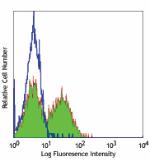
Human peripheral blood lymphocytes were stained with purifie... -
Biotin anti-human CD314 (NKG2D)
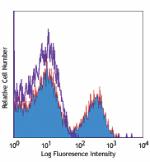
Human peripheral blood lymphocytes were stained with biotiny... -
PE anti-human CD314 (NKG2D)

Human peripheral blood lymphocytes were stained with CD314 (... -
APC anti-human CD314 (NKG2D)
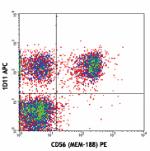
Human peripheral blood lymphocytes were stained with CD314 (... -
PE/Cyanine7 anti-human CD314 (NKG2D)

Human peripheral blood lymphocytes were stained with CD56 AP... -
Ultra-LEAF™ Purified anti-human CD314 (NKG2D)
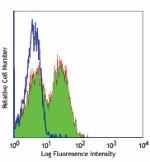
Human peripheral blood lymphocytes were stained with Ultra-L... -
Brilliant Violet 510™ anti-human CD314 (NKG2D)

Human peripheral blood lymphocytes were stained with CD8 APC... 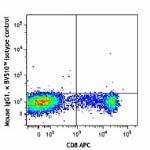
-
PerCP/Cyanine5.5 anti-human CD314 (NKG2D)

Human peripheral blood lymphocytes were stained with CD8 Bri... -
FITC anti-human CD314 (NKG2D)
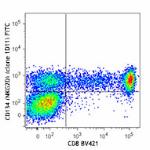
Human peripheral blood lymphocytes were stained with CD8 Bri... 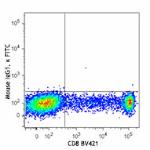
-
Brilliant Violet 421™ anti-human CD314 (NKG2D)
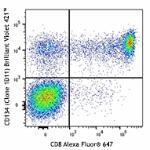
Human peripheral blood lymphocytes were stained with CD8 Ale... 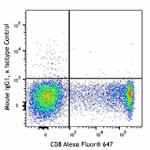
-
APC/Cyanine7 anti-human CD314 (NKG2D)

Human peripheral blood lymphocytes were stained with CD8 FIT... -
Alexa Fluor® 647 anti-human CD314 (NKG2D)
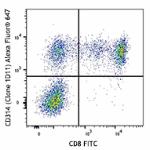
Human peripheral blood lymphocytes were stained with CD8 FIT... 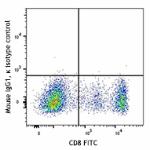
-
PE/Dazzle™ 594 anti-human CD314 (NKG2D)
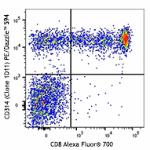
Human peripheral blood lymphocytes were stained with CD8 Ale... 
-
Brilliant Violet 785™ anti-human CD314 (NKG2D)

Human peripheral blood lymphocytes were stained with CD8 FIT... -
Brilliant Violet 605™ anti-human CD314 (NKG2D)

Human peripheral blood lymphocytes were stained with CD8 FIT... -
APC/Fire™ 750 anti-human CD314 (NKG2D)

Human peripheral blood lymphocytes were stained with anti-hu... -
TotalSeq™-A0165 anti-human CD314 (NKG2D)
-
TotalSeq™-C0165 anti-human CD314 (NKG2D)
-
TotalSeq™-B0165 anti-human CD314 (NKG2D)
-
Alexa Fluor® 660 anti-human CD314 (NKG2D) Antibody

Human peripheral blood lymphocytes were stained with CD8 FIT... -
PE/Cyanine5 anti-human CD314 (NKG2D)

Human peripheral blood lymphocytes were stained with anti-hu... -
TotalSeq™-D0165 anti-human CD314 (NKG2D)
-
Brilliant Violet 711™ anti-human CD314 (NKG2D)

Human peripheral blood lymphocytes were stained with anti-hu... -
Brilliant Violet 650™ anti-human CD314 (NKG2D)

Human peripheral blood lymphocytes were stained with anti-hu... -
Spark Red™ 718 anti-human CD314 (NKG2D) (Flexi-Fluor™)
-
Spark Blue™ 574 anti-human CD314 (NKG2D) (Flexi-Fluor™)
 Login / Register
Login / Register 













Follow Us